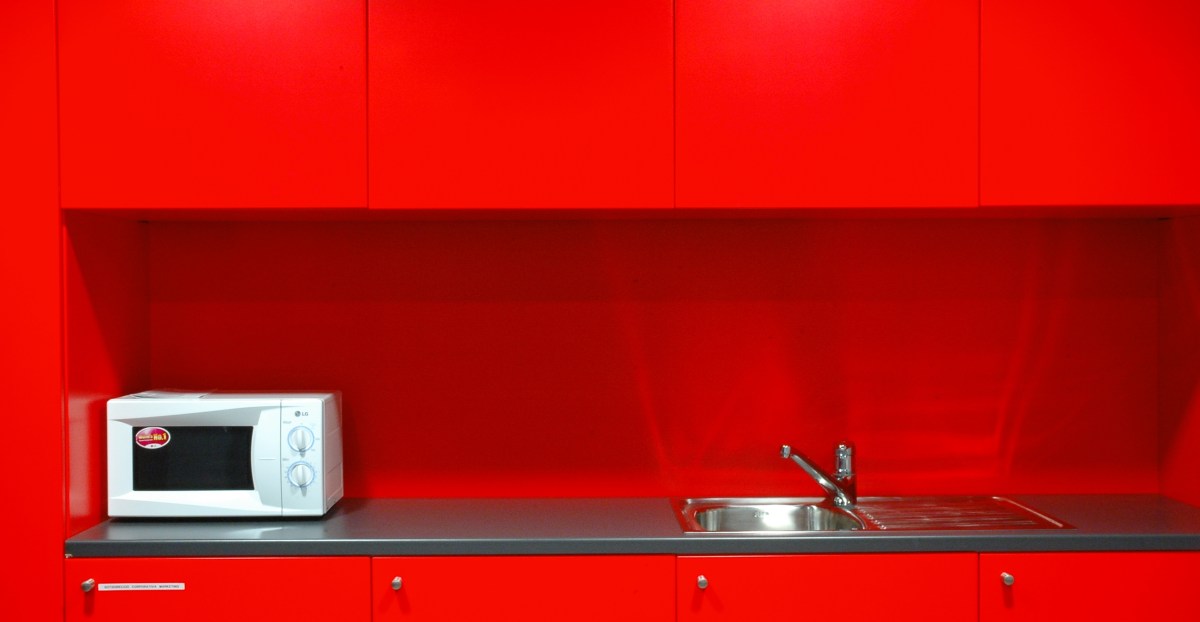
Your microwave is not going to kill you. | Santiago Barrio/Cover/Getty Images
A Vox reader asks: Are microwaves actually bad for you, your health, and the food you eat?
I think anybody who’s ever “nuked” some leftovers or a ready-made meal has pondered the same question. Nuke? As in the same nuclear radiation that causes deformities and mutations in my favorite science fiction? What exactly am I doing to my body?
It’s an understandable concern. It seems like so much of what we eat is bad for us, and US Health and Human Services Secretary Robert F. Kennedy Jr. constantly warns Americans that modern conveniences could be allowing invisible particles into our bodies that damage our health. It made sense then, that some staffers on his presidential campaign were reportedly fearful of radiation from kitchen microwaves.
But here is the good news: You are not ingesting toxic nuclear radiation. Microwaves are in fact quite safe — but there are a few precautions you should be aware of, if only to avoid that tinge of anxiety the next time you hit start on your instant oatmeal.
Let’s start here: Microwaves produce a very different kind of radiation than a nuclear reaction. A nuclear bomb’s detonation will emit ionizing radiation. That stuff carries so much energy it can actually strip electrons out of individual atoms, which can damage your body at the cellular level and potentially lead to cancer and other illnesses. A microwave will not.
The radiation produced by your kitchen microwave, on the other hand, is “non-ionizing.” These are electromagnetic waves that are similar to radio and light waves. Non-ionizing radiation is much, much less powerful than the other kind, which means it does not possess the necessary energy to alter your DNA at the molecular level.
While prolonged, direct and intense exposure could lead to tissue damage, we are exposed to non-ionizing electromagnetic radiation all the time with no significant health harms, according to the Centers for Disease Control and Prevention. Visible light — literally the light waves from the sun or a light bulb that our eyes pick up and our brains turn to images — is even a low-grade form of it.
Plus, microwaves are appliances that the FDA strictly regulates to reduce any potential risk of radiation leakage; the agency says radiation injury from microwaves is “very rare” and associated with extremely unusual circumstances or the microwave being in poor condition.
Okay, we’re not radiating ourselves when we nuke a slice of pizza. That’s good. But you may still be wondering: Am I ruining the food somehow?
While I personally hate the way a piece of pizza tastes after being microwaved, when considering the nutritional value (of pizza or anything else), heating your food in the microwave isn’t going to hurt it. “The non-ionizing radiation used by a microwave does not make the food radioactive,” according to the US Environmental Protection Agency. And it won’t deplete your food of its nutritional value either: As Harvard Medical School’s Anthony Komaroff wrote in 2019, “microwave cooking is actually one of the least likely forms of cooking to damage nutrients.”
The reason is simple: time. We invented microwaves to have a quicker way to heat up food and, as it turns out, that also confers some nutritional benefits. Foods leach nutrients when they are under more heat for a longer period of time. By shortening the amount of time that your food is being heated, microwaves allow it to retain more of its vitamins and minerals. It’s unambiguously better than boiling, for example, during which the hot water removes many of the nutrients. How microwaving compares to roasting, sauteeing, or air-frying depends on the vegetable, but in general, microwaves are no worse for your food — from a nutritional point of view — than other forms of cooking.
Alright, microwaves aren’t slowly poisoning you, nor are they robbing your food of its health benefits. Are there any catches? Sort of.
There are at least two precautions to take when using your microwave. First, make sure you are using a safe container. Never, ever put metal in the microwave. And don’t put plastic bowls or containers in there either: Everybody is freaking out about microplastics, BPAs, and PFAS these days — and for good reason: When it comes to microwaves, you do have some reason to worry. Studies have indicated that chemicals can leach into your food if you heat your food in them using a microwave. Once they enter your body, microplastics could damage your heart and other organs, disrupt your digestion, and affect your mental sharpness.
You may be better off with glass or ceramic containers. At the very least, check that the plates or bowls you’re using in a microwave have been labeled safe for that use. You may want to consider replacing containers after a lot of microwave use because the risk of leaching harmful chemicals increases with time or if they have been damaged in some way.
And then there is one other kind of harm from microwaves that health officials worry about: burns. Anybody who has grabbed a plate out of their microwave as soon as the buzzer sounds knows they can produce intense heat that can burn your body when you grab your food or your tongue and mouth when you ingest it. That is what the FDA is warning consumers to be mindful of, rather than nuclear mutations.
The fear of turning into an extra from the Mad Max post-apocalypse should not dissuade you from using your kitchen’s microwave — so long as you are also using an appropriate container and you handle it with care. Instead, focus on what preparation will be the most satisfying to you, and some people may want to consider what will provide the most nutritional value.
Me? I can’t stand microwaved pizza anyway. It’s always going in the oven: 325 degrees, for 10 minutes.
From Vox via this RSS feed


